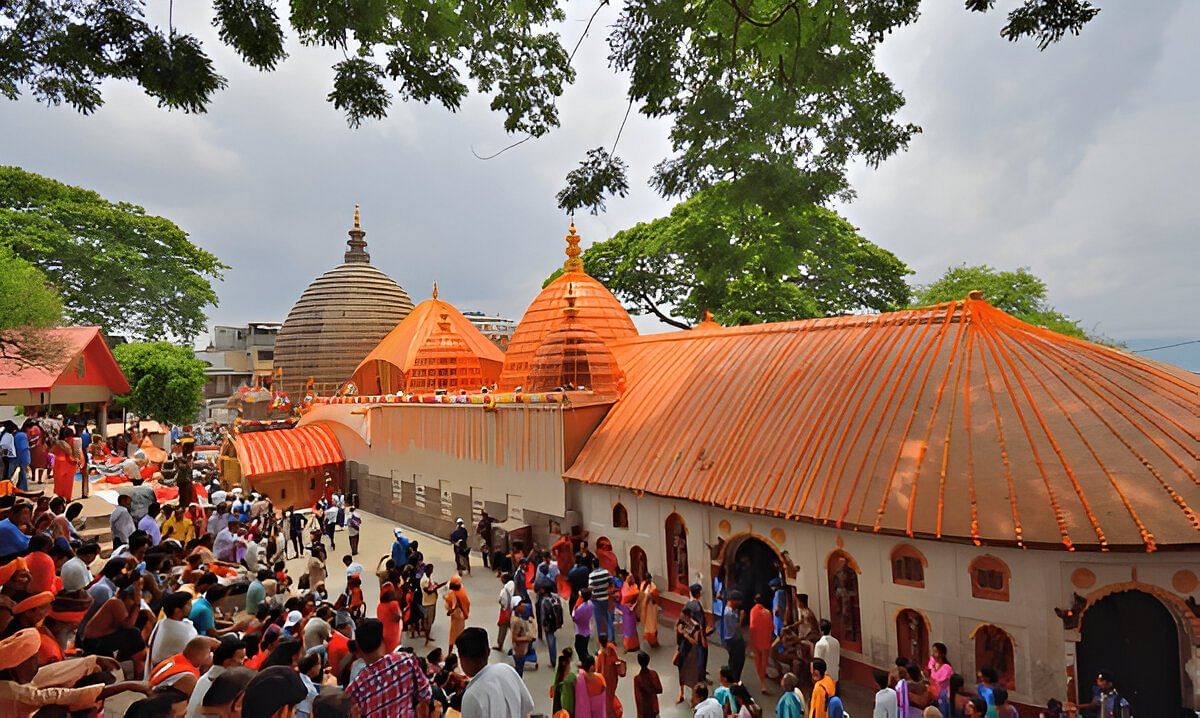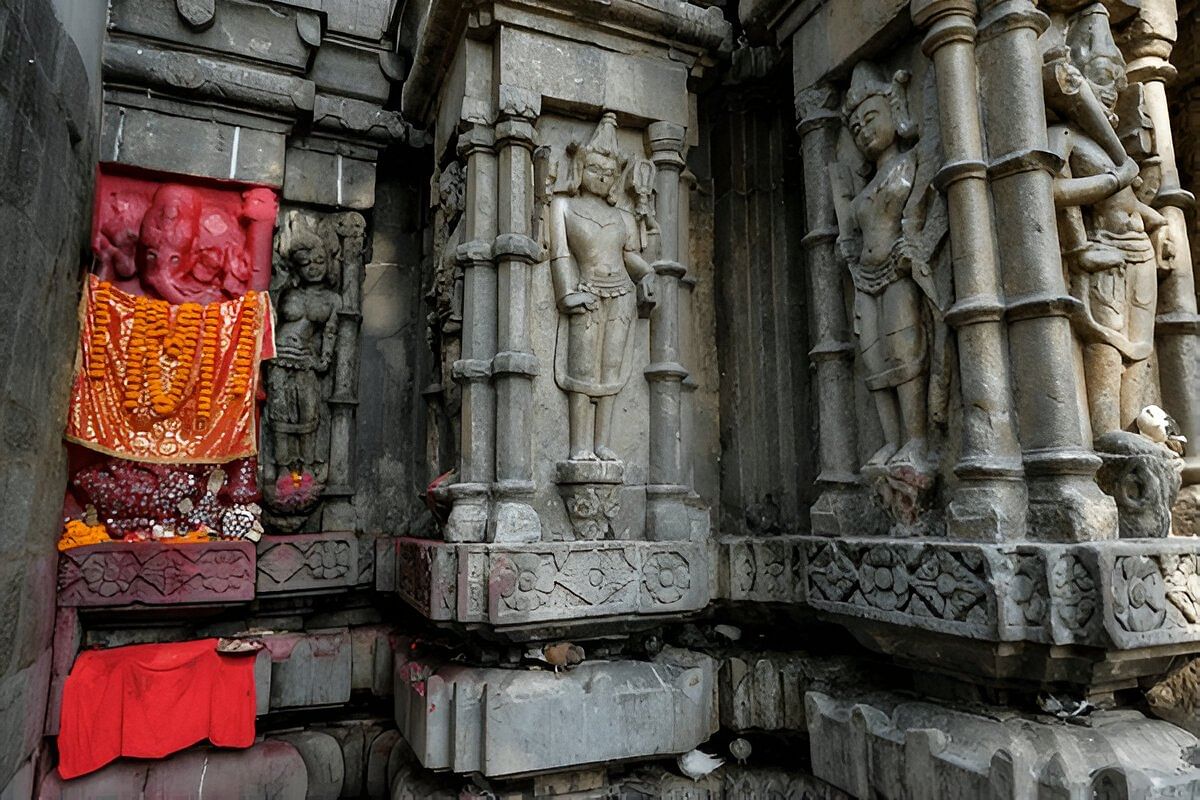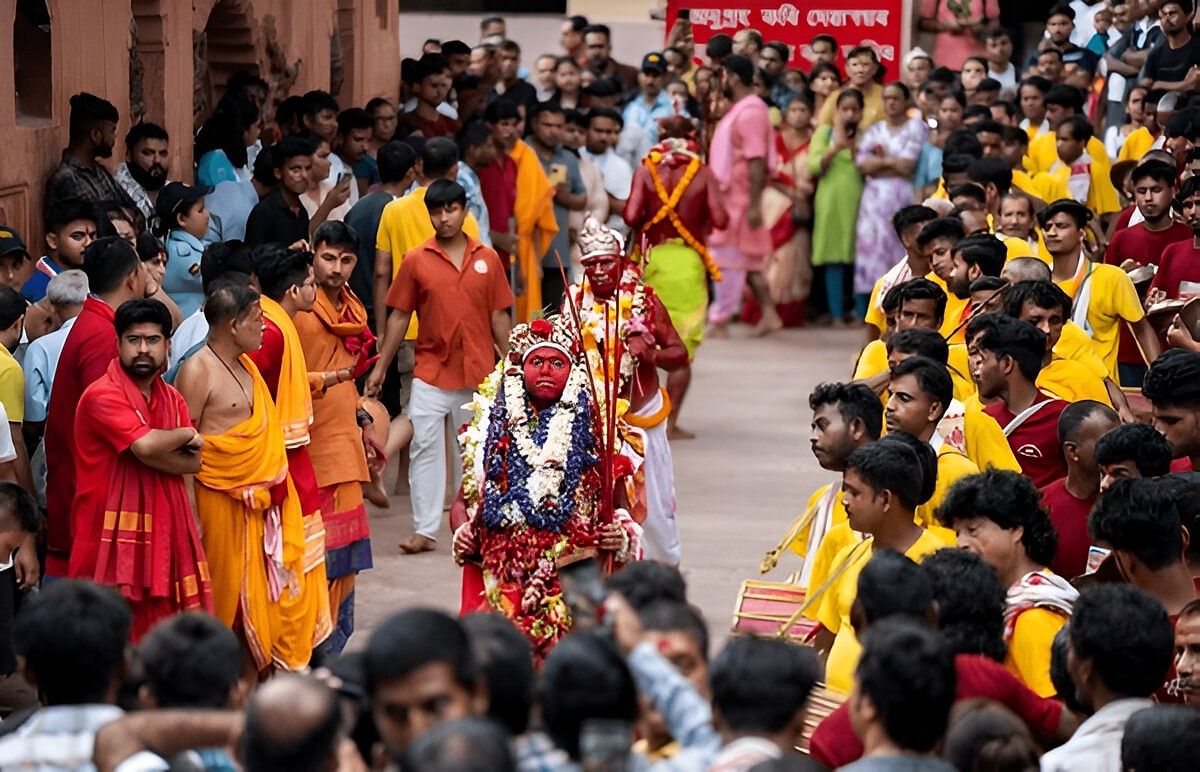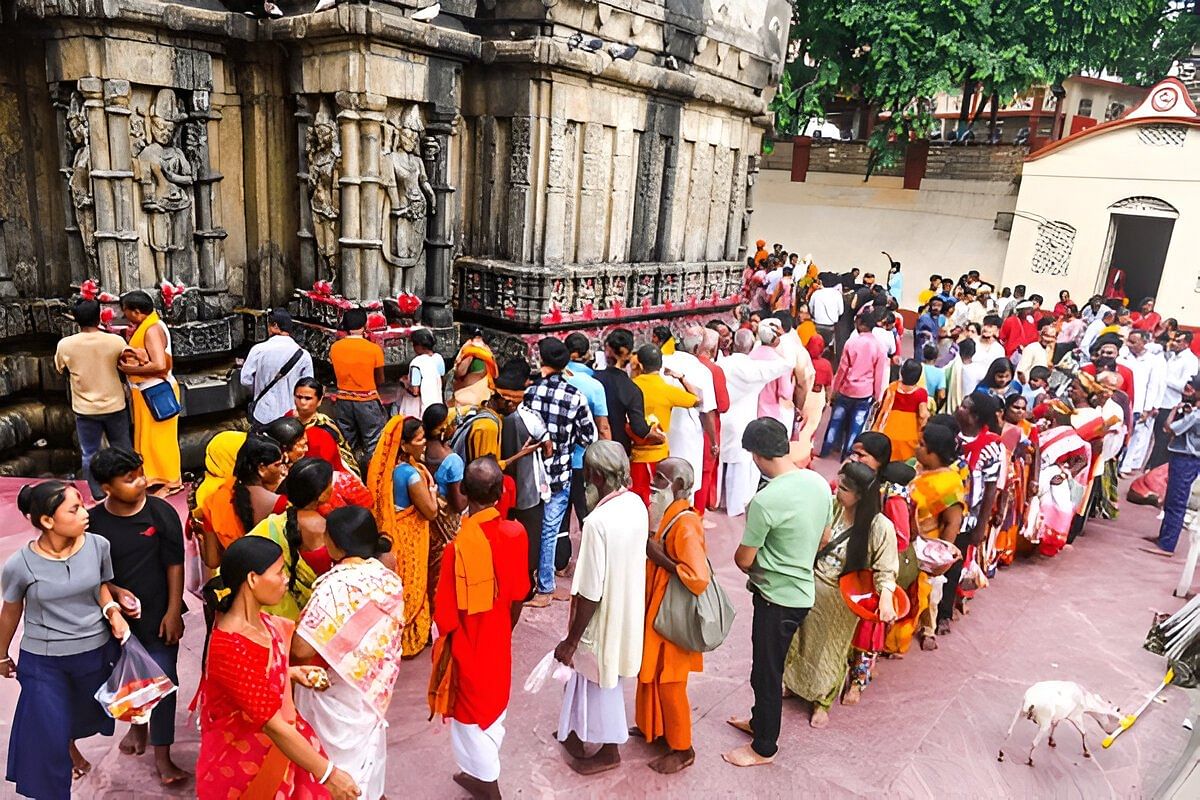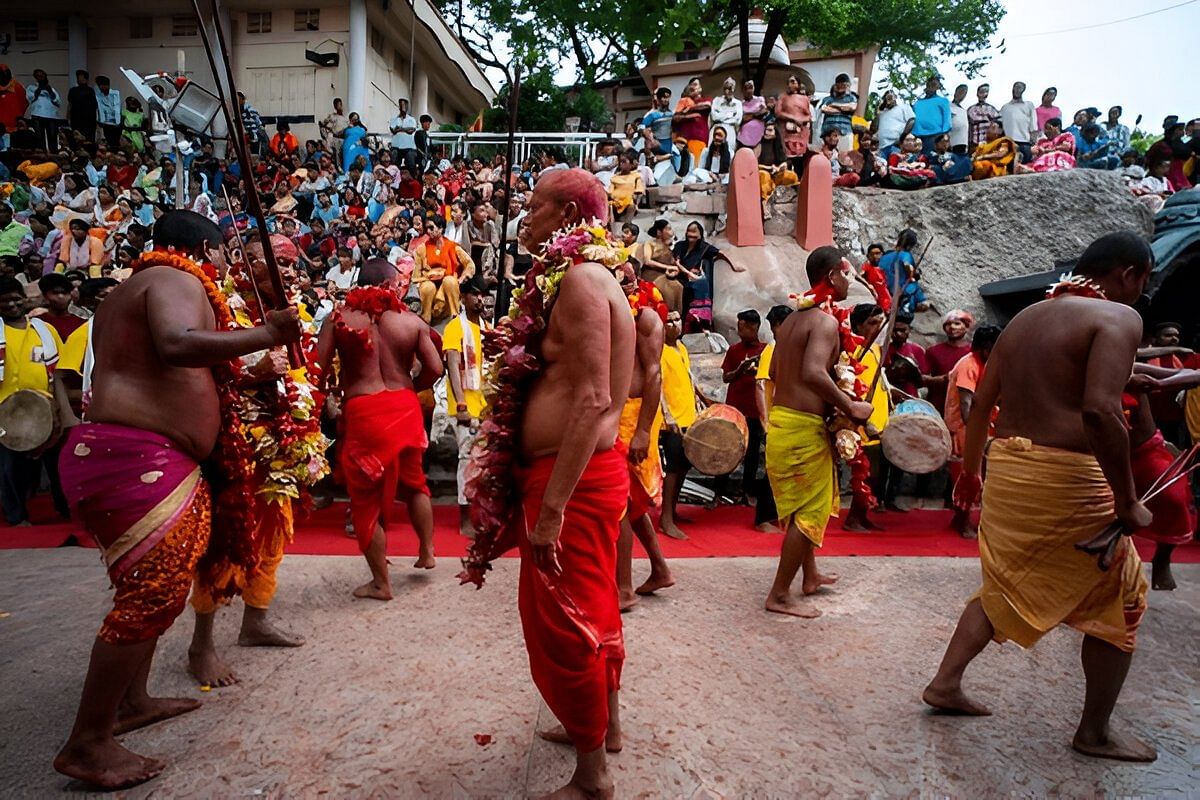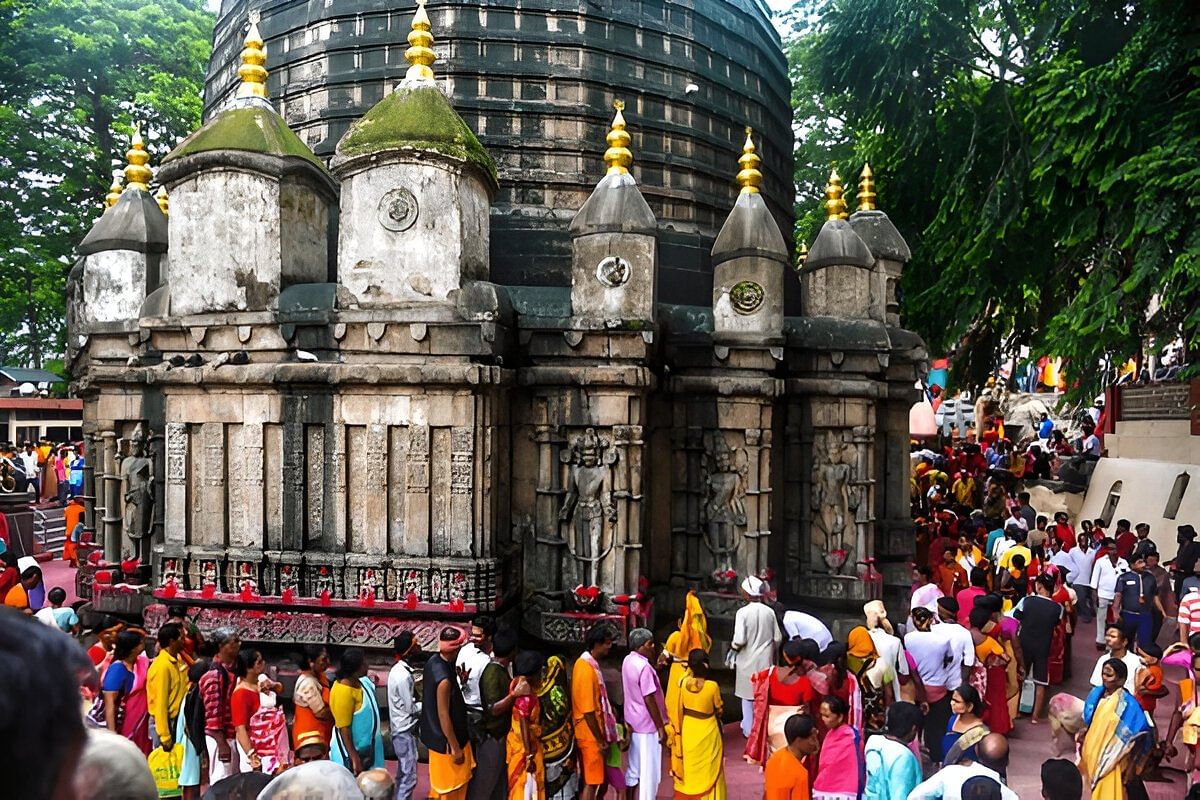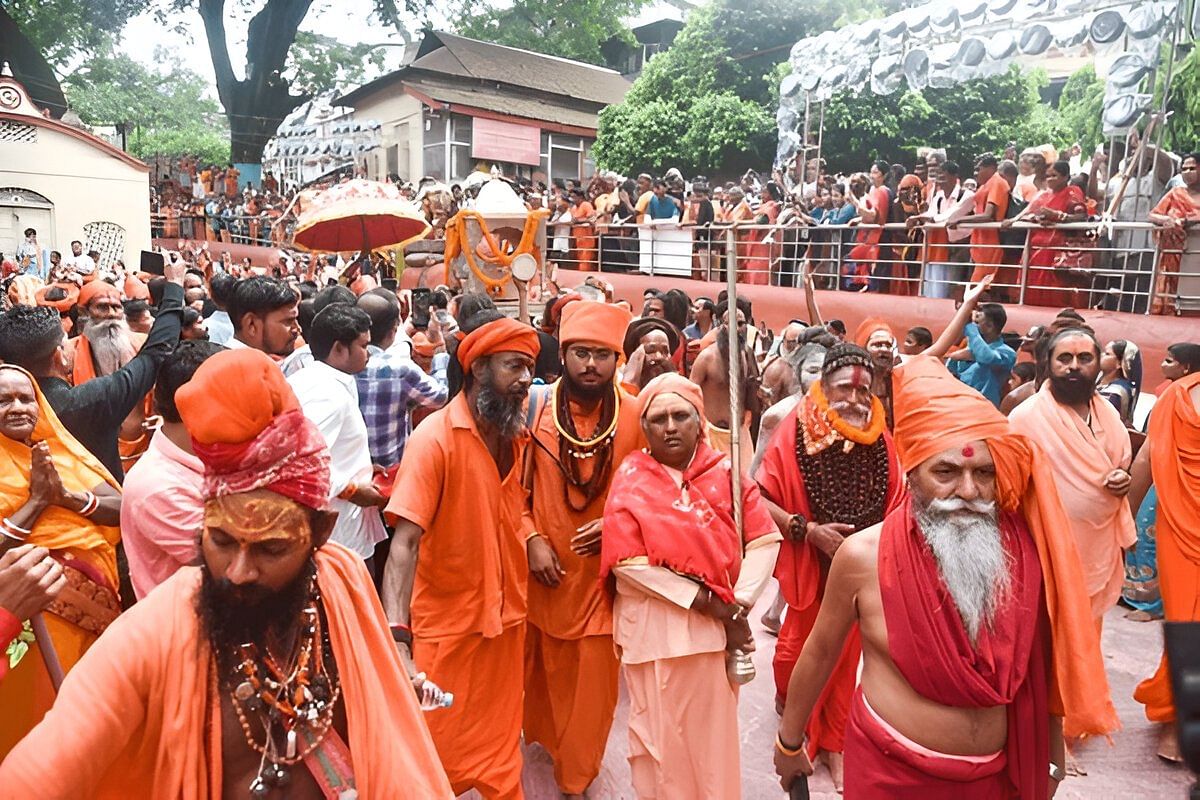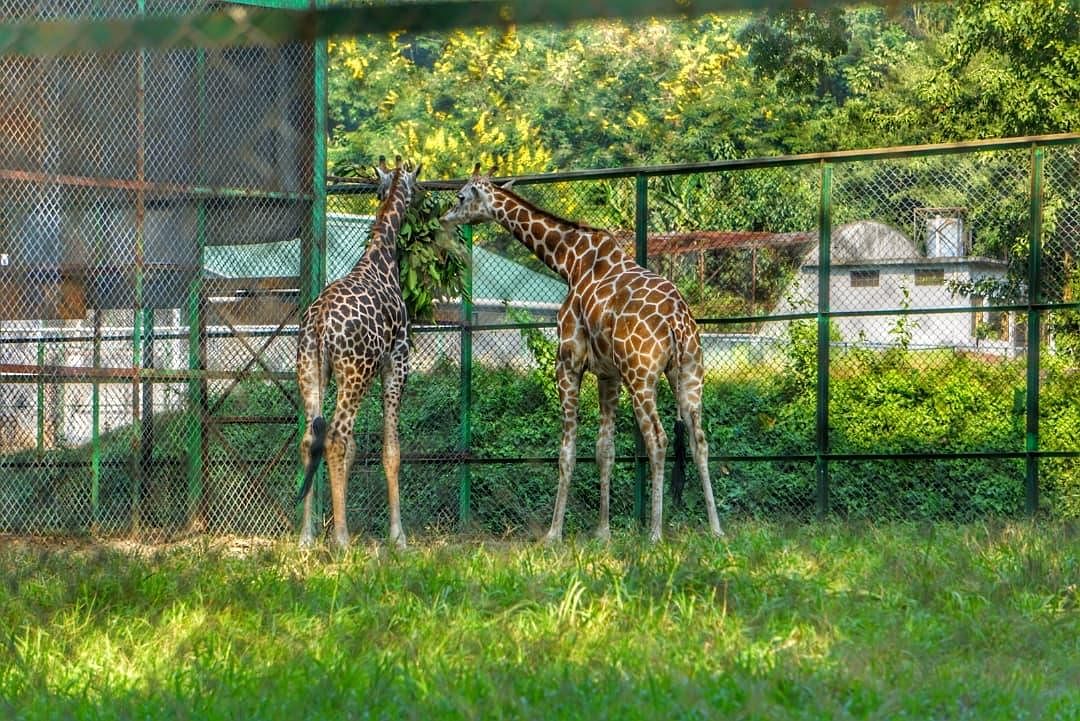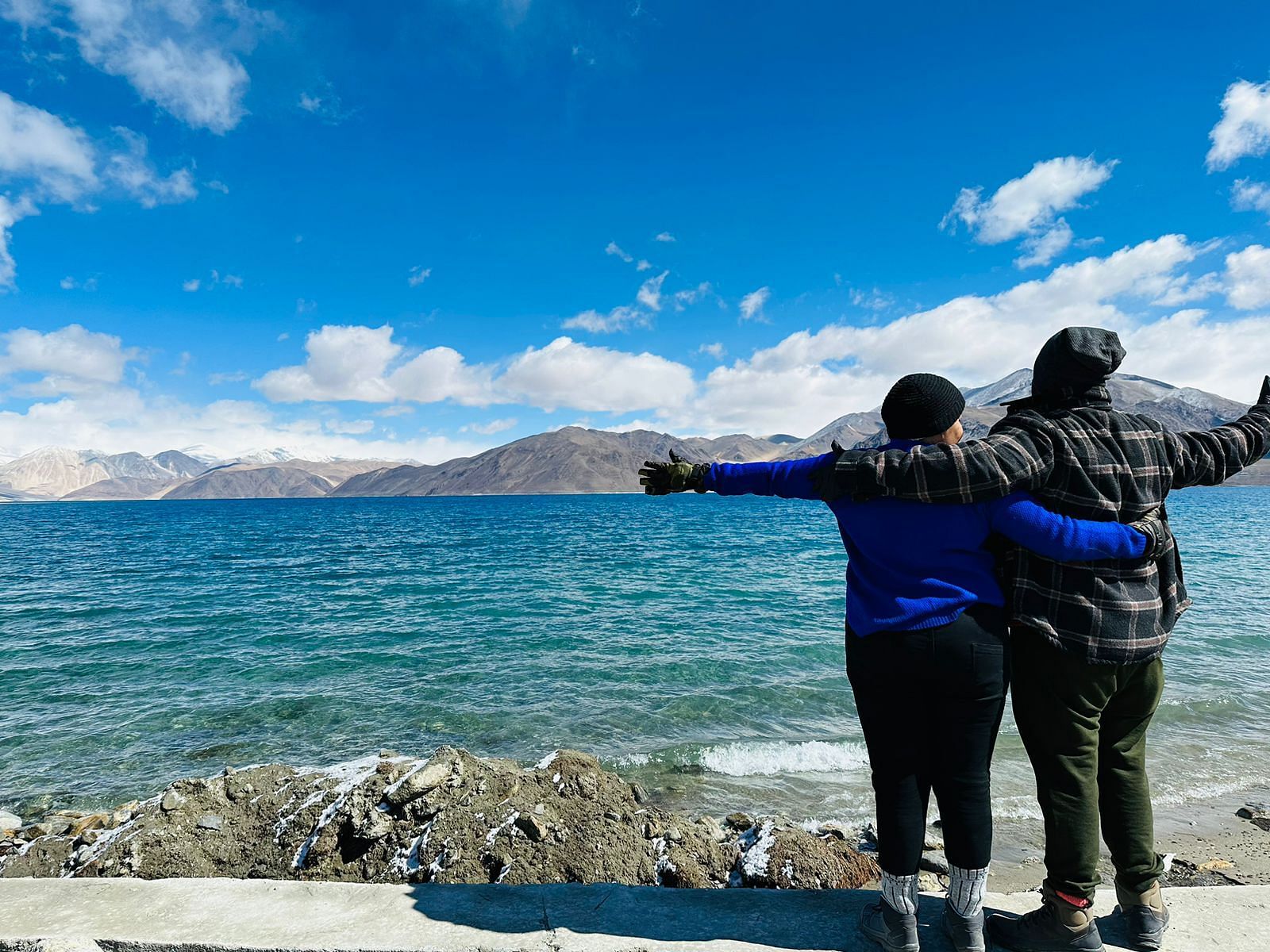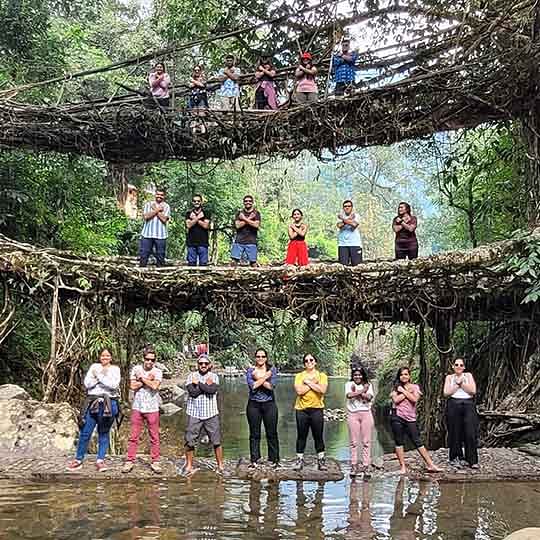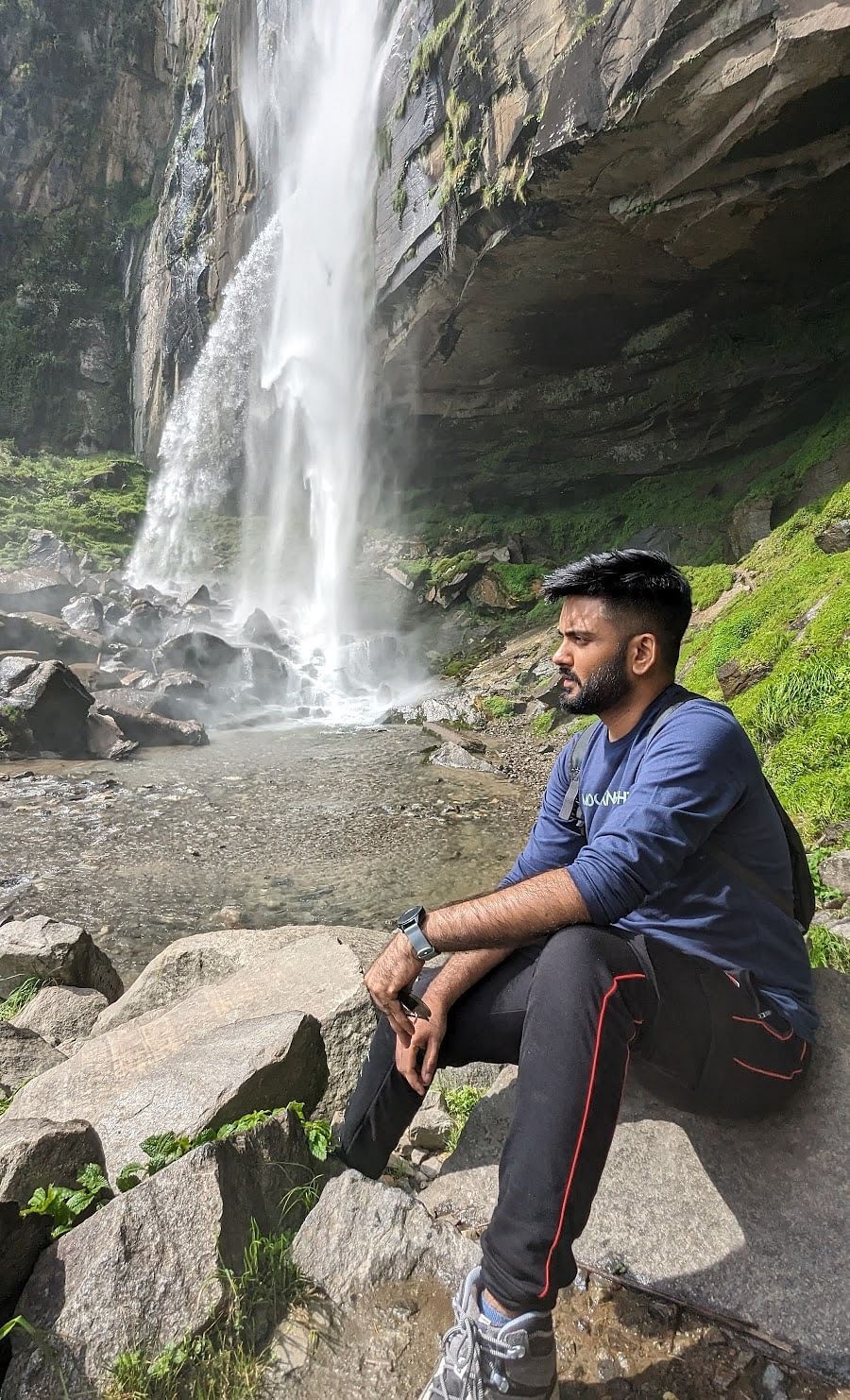There are temples where gods are worshipped with flowers and incense. And then, there’s Maa Kamakhya Temple Assam, where the goddess herself is believed to bleed. Yes, you heard that right!
The moment I heard about it, I knew I couldn’t just sit back and scroll past it like another myth on the internet. I had to see it for myself. So, I packed my bags and headed straight to Guwahati, Assam, where thousands of devotees gather, eyes filled with faith and anticipation, waiting for the temple doors to open. But this wasn’t just any temple visit—this was Kamakhya, where the goddess’s menstruation is not just acknowledged but celebrated as a divine miracle.
And then comes the most intriguing part—the part that makes your brain scream, Wait, what?!
The water inside the temple turns red. Naturally. No dyes. No tricks. Just pure mystery. And that’s just the beginning—Kamakhya is full of secrets waiting to be unraveled. One thing is certain—this temple isn’t just a place of worship; it’s a doorway to something beyond human understanding. So, let’s uncover the secrets that lie hidden within ancient walls of Maa Kamakhya Temple.
History of the Kamakhya Temple
Alright, let’s dive into the wild, untold history of the Kamakhya Temple—one of India’s most mysterious and powerful shrines. This isn’t your average temple story; it’s a mix of myth, blood, tantric secrets, and royal drama. Buckle up!
The Mythological Origin: Sati’s Womb & Shiva’s Rage
So, according to Hindu legends, this temple’s story starts with Goddess Sati, who immolated herself after her father insulted Shiva. A furious Shiva, carrying her burning corpse, began the Tandava (dance of destruction). To stop the world from crumbling, Vishnu used his Sudarshan Chakra to cut Sati’s body into pieces.
Where did her yoni (womb) fall? Right on Nilachal Hill in Guwahati—where Kamakhya stands today. That’s why it’s one of the 51 Shakti Peethas, and unlike other temples, there’s no idol—just a natural yoni-shaped rock, always moist from an underground spring.
Ancient Roots: Prehistoric Fertility Worship?
Here’s a crazy fact: Kamakhya Mandir might be older than Hinduism itself. Some historians believe the site was originally a tribal fertility shrine for the Khasis and other local tribes, who worshipped a mother goddess. Over time, it got absorbed into Hinduism as Shakti worship (Goddess power) took over.
The Koch Dynasty’s Deadly Obsession
Fast-forward to the 16th century—enter King Naranarayan of the Koch dynasty. He was obsessed with Kamakhya and wanted to build a grand temple. But here’s the dark twist: Every time they built the structure, it would collapse at night.
Finally, a tantric priest advised human sacrifice. A worker named Megha volunteered (or was forced—history is fuzzy), and his spirit is said to guard the temple even today. The structure finally stood, and that’s the current temple we see—a mix of Koch and Ahom architecture.
The Ahom Kings & Blood Sacrifices
The Ahom rulers (Assam’s warrior kings) took over later and LOVED Kamakhya. They weren’t just devotees--they were hardcore believers in its tantric power.
- Human sacrifices? Some texts hint at it, though it’s debated.
- Animal sacrifices? Absolutely. Even today, goats are offered during Durga Puja.
- Royal patronage? The Ahoms funded grand rituals, believing the goddess gave them power in battle.
The British Era: Suppression & Secret Cults
When the British took Assam, they were freaked out by the temple’s tantric practices. Reports from colonial officers describe "bizarre rituals, blood offerings, and nude sadhus." They tried to suppress it, but guess what? The underground tantric cults survived.
Suggested Read: Discover The Best Places To See In Assam: Top 10 List
Every year, around mid-June, the Kamakhya Temple Assam closes its doors for three days. The reason? According to legend, this is when Goddess Kamakhya menstruates, symbolizing the renewal of fertility on Earth. The festival, known as Ambubachi Mela, is one of the most unique and spiritually charged events in India.
A Time of Stillness and Sacredness
During these three days, the temple remains completely shut. No prayers, no rituals—just silence. The yoni-shaped stone inside the sanctum, which represents the goddess, is draped in a red cloth, signifying her menstruation. Devotees believe that during this time, the goddess is resting, and therefore, worship is put on hold.
An age-old belief surrounds the Brahmaputra River, which flows near the temple. Many claim that during Ambubachi, the river’s waters turn red. Scientists explain this as iron-rich soil being washed down from the hills, but for devotees, it is a sign of the goddess’s sacred energy manifesting in nature.
The Gathering of Sadhus and Tantrics
Ambubachi Mela is not just a festival; it is a spiritual phenomenon. This is the time when Aghoris, Tantrics, and Sadhus from across India gather at Kamakhya. Some perform rituals, others meditate in solitude, and a few engage in esoteric practices believed to harness divine energy. It is said that during this period, the temple and its surroundings become a hub of occult knowledge and tantric wisdom.
The Grand Reopening and a Sacred Offering
On the fourth day, the temple reopens, and thousands of devotees rush in for darshan. The red cloth that covered the yoni stone is now considered prasad—a divine offering. Devotees believe that receiving even a small piece of this sacred fabric brings fertility, protection, and prosperity.
A Festival That Defies Taboos
What makes Ambubachi Mela so extraordinary is that it openly celebrates menstruation—a topic still considered taboo in many parts of India. Here, the goddess’s cycle is seen as a powerful cosmic event, reinforcing the idea that menstruation is not impure but rather a symbol of creation and life.
Suggested Read: 20 Best Things To Do in Guwahati, Assam for Every Traveller
Mystical Beliefs and Untold Stories
Kamakhya Temple isn’t just a place of worship—it’s a world of faith, mystery, and stories that refuse to fade. Many believe that disrespecting the temple’s sacred rituals can invite bad luck, as the goddess’s energy is not to be taken lightly. There are also hushed whispers about secret tantric ceremonies, things that happen behind closed doors and never get spoken about openly. And then there are the eerie coincidences—like journalists who tried to dig too deep into these mysteries, only to meet with strange accidents. Just a chance? Or something more? No one really knows, but the legends live on
How to Reach Kamakhya Temple
Location: Kamakhya, Guwahati, Assam 781010
Visiting Kamakhya Temple is easy, thanks to Guwahati’s well-connected transport network. Whether you’re arriving by air, train, or road, here’s how you can get there conveniently.
1. By Air
Nearest Airport: Lokpriya Gopinath Bordoloi International Airport (GAU), about 20 km from the temple.
From the airport to the temple:
- Taxi/Cab: Prepaid taxis and app-based cabs (Ola/Uber) are available, costing around ₹500–700
- Bus: ASTC (Assam State Transport Corporation) buses run from the airport, but they are less frequent and not the most convenient option.
2. By Train
Nearest Railway Station: Guwahati Railway Station (GHY), about 6 km from the temple.
From the station to the temple:
- Auto-rickshaw/Taxi: Easily available, with fares ranging from ₹150–300.
- Bus: Local buses operate on this route, but they can be crowded.
3. By Road
From Guwahati City:
- Taxi/Auto: Readily available, with fares between ₹200–400.
- Local Bus: ASTC and private buses frequently run to Kamakhya, with fares ranging from ₹20–50.
From Other Cities:
- Interstate Buses: Regular buses connect Guwahati to neighboring states like West Bengal, Meghalaya, and Bihar. From Guwahati’s main bus terminals, local transport can take you to the temple.
Suggested Read: Explore Top 6 Hidden Gems of Guwahati: A Traveler’s Guide
Best Time to Visit Kamakhya Temple
Kamakhya Temple is open throughout the year, but the best time to visit depends on weather, crowd levels, and festivals. Here’s a breakdown:
1. Ideal Months: October to March
The winter months (October to March) are the best time to visit. The weather is pleasant, with temperatures ranging between 10–25°C, making it comfortable for sightseeing and darshan.
2. Ambubachi Mela: June
If you want to experience the temple’s grandest festival, visit during the Ambubachi Mela in June. It attracts thousands of devotees and spiritual seekers, creating an electrifying atmosphere. However, expect large crowds and long waiting times.
3. Avoid Monsoon Season: July to September
The monsoon season (July to September) brings heavy rainfall, which can make travel inconvenient due to slippery roads and high humidity. While the temple looks stunning in the rain, outdoor activities may be limited.
4. Navratri and Special Occasion
Kamakhya Temple is also a special place to visit during Navratri (March-April & September-October), when devotees gather to seek blessings from Goddess Kamakhya.
Kamakhya Temple Timings and Entry Fees
The temple is open from 5:30 AM to 1:00 PM and then again from 2:30 PM to 5:30 PM. While free darshan is available for all devotees, there’s no option for online booking or special puja reservations. If you’re looking for a VIP darshan, you’ll need to buy the ticket at the temple counter. It costs ₹501 per person, but if you’re a defense personnel, you get a special rate of ₹50 per person.
Places to Visit Near Kamakhya Temple
As one of the famous temples in Assam, Kamakhya also draws visitors to explore Guwahati’s rich culture. After seeking blessings at Kamakhya Temple, you can explore some amazing places nearby. Here are a few must-visit spots in Guwahati:
1. Assam State Zoo & Botanical Garden (14 km)
If you love wildlife, this zoo is a great place to visit. You can spot rare animals like the one-horned rhinoceros, tigers, and leopards, along with a variety of birds and reptiles.
2. Umananda Temple (7.6 km)
Located on the scenic Peacock Island in the Brahmaputra River, this temple is dedicated to Lord Shiva. You’ll need to take a ferry to reach this peaceful and picturesque spot.
3. Srimanta Sankardev Kalakshetra (27.5 km)
This cultural complex showcases Assam’s rich heritage through museums, traditional art, and an open-air theater. Perfect for anyone who wants to dive into Assam’s history and culture.
4. Brahmaputra River Cruise (7 km)
One of the best ways to enjoy Guwahati’s beauty is by taking a sunset or dinner cruise on the mighty Brahmaputra River. You’ll get stunning views and a relaxing experience.




